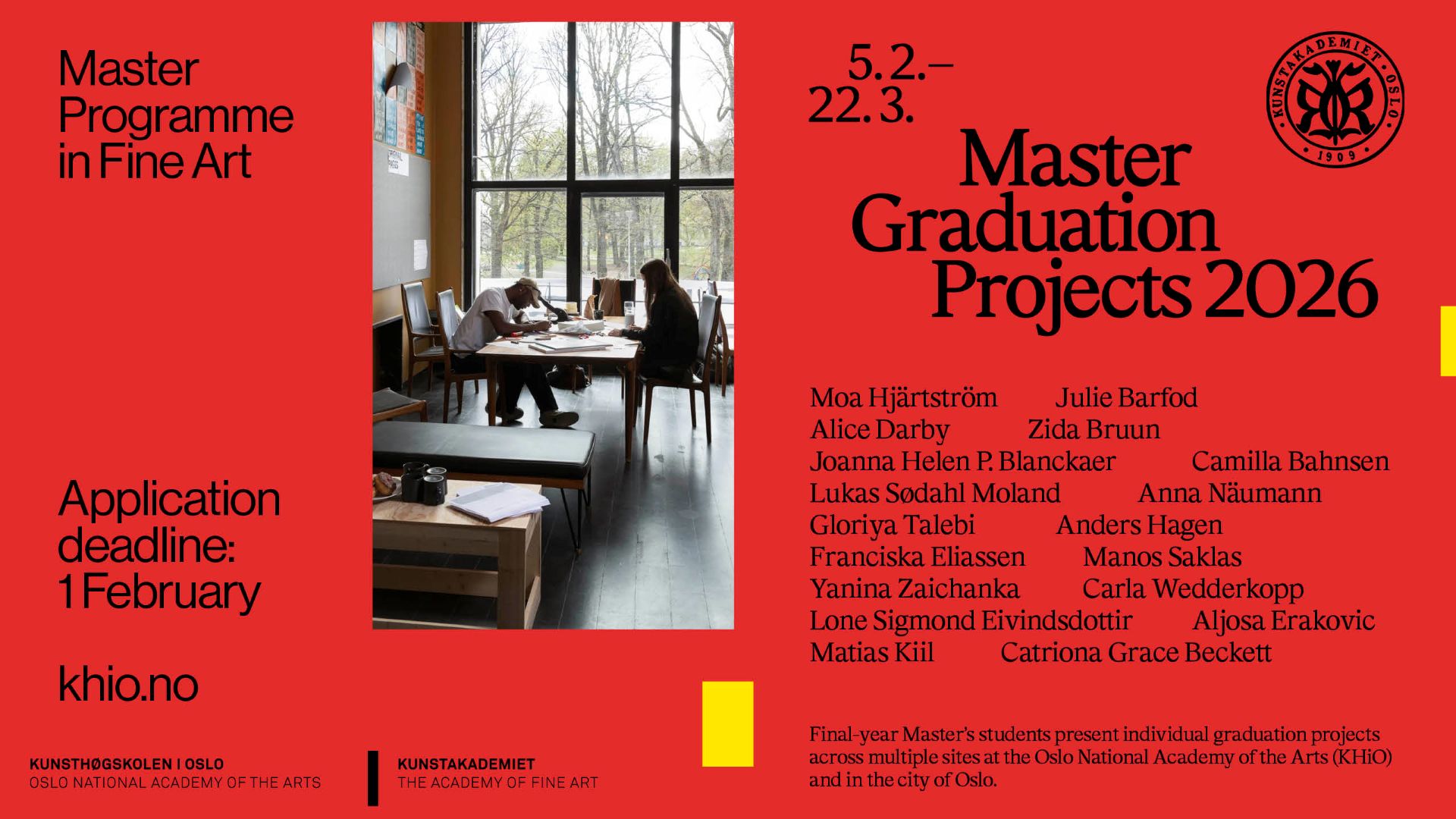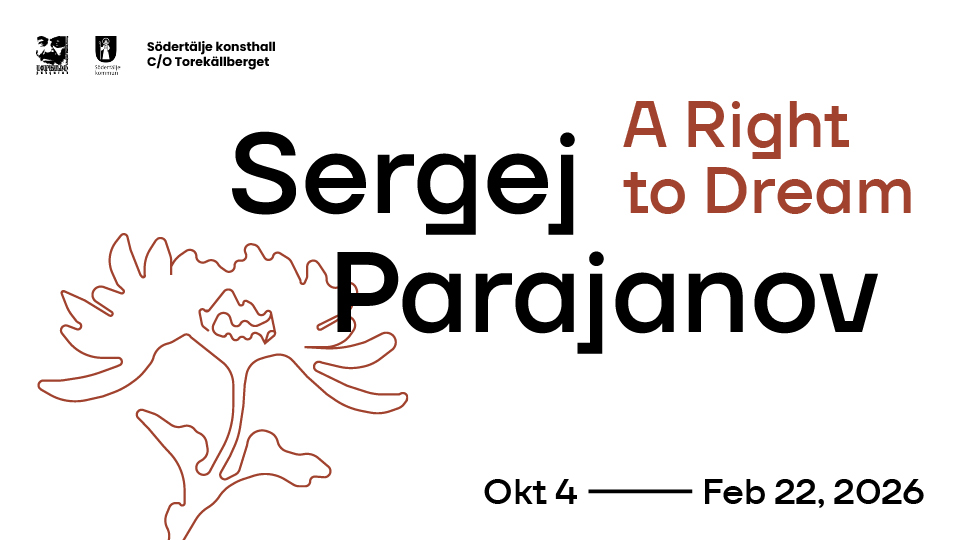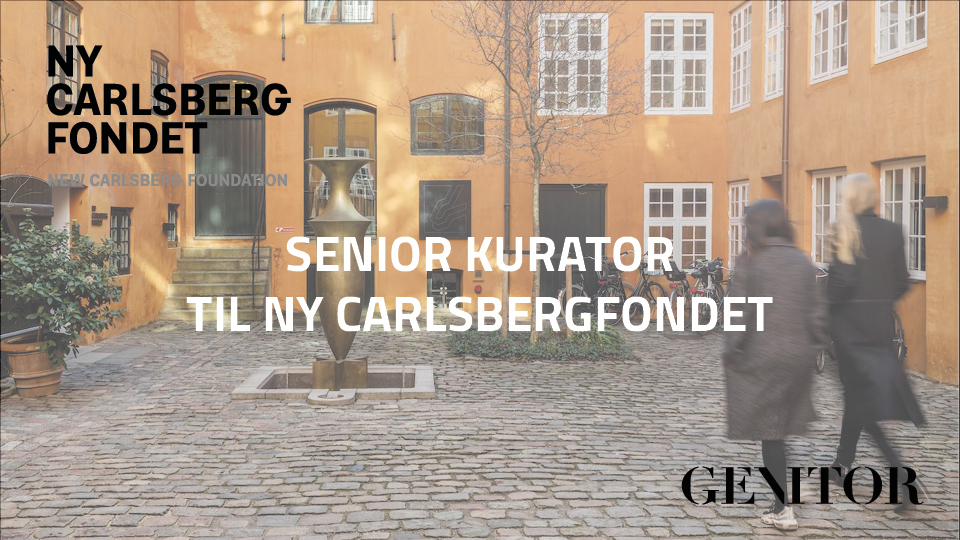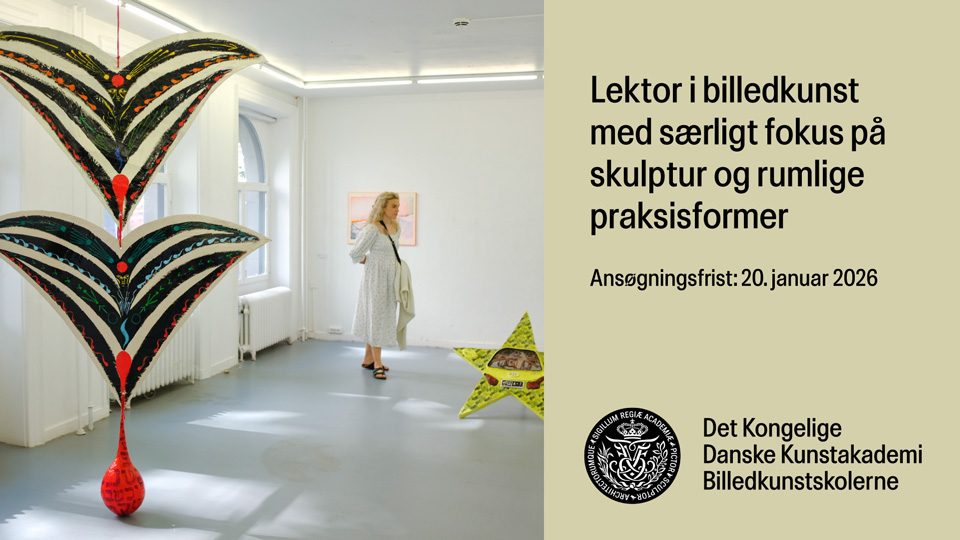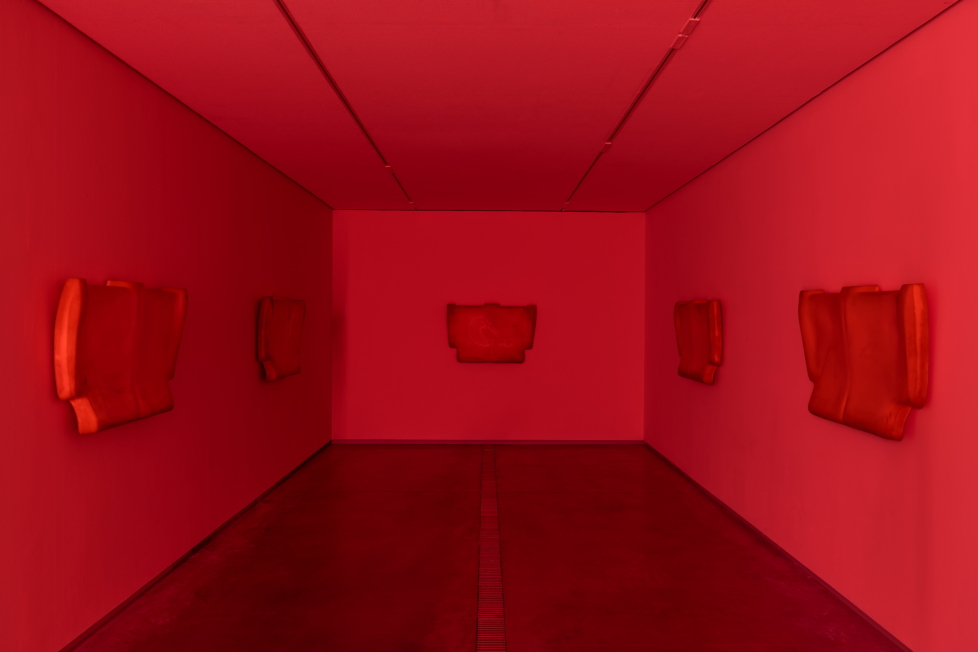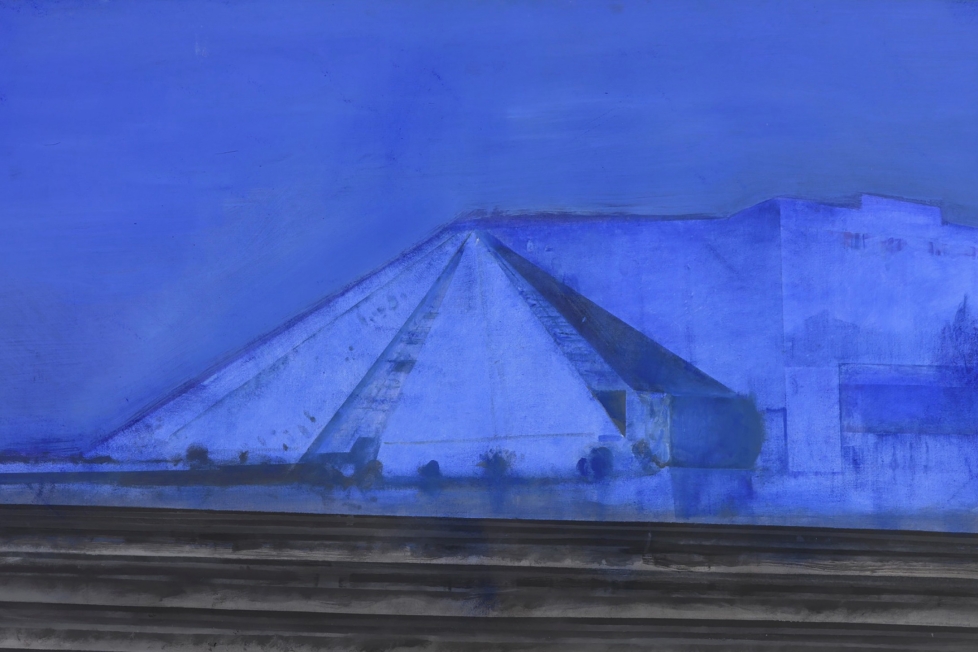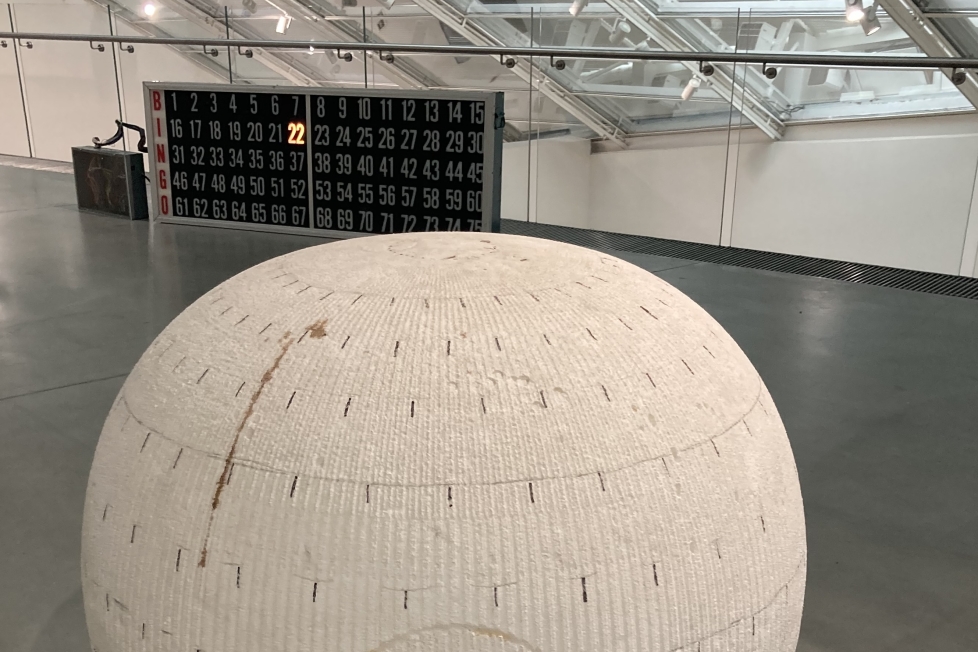
Diana Baldon recently took up the position as director of Index in Stockholm, and her first project, The Audience is the Mother of Self-Invention, opened on Saturday, 29 September, with performance pieces by Pierre Bal-Blanc and Mattin. Other participating artists included, among others, Nina Beier, Ján Mančuška, Babette Mangolte, Lilo Nein, Olav Westphalen, as well as the British composer Cornelius Cardew. Baldon is also curator, together with Ilse Lafer and with the involvement of Luke Skrebowski, of Counter-Production, which opened on 6 September at the Generali Foundation in Vienna. Kunstkritikk’s Frans Josef Petersson met up with Baldon prior to the opening last weekend to talk about her forthcoming activities at Index.
Frans Josef Petersson: You started as director of Index earlier this year and on Saturday you will present your first project: the first installment of the exhibition The Audience is the Mother of Self-Invention. What will happen this weekend and how is the work coming along?
Diana Baldon: This weekend we are going to exhibit an exhibition, or, rather, it is going to be performed. I have always found the possibility art and curating have to reconfigure each other to be important. That comes a little bit from my background – teaching art theory at an art academy – as well as teaching curatorial studies to artists, which has made me realize how the institutional habits of both curators and audiences have been influenced by artists; not least how practices from the 1970s, with artists like Michael Asher or Marcel Broodthaers, have influenced curatorial practice since the 1990s. I am aware of these historical changes, and I want to work with these ideas here at Index. At the same time I see my directorship as a natural development of the fantastic work accomplished by Mats [Stjernstedt] and Helena [Holmberg].
But they were always interested in the exhibition in a more traditional sense, focusing primarily on presentations of single artists or collectives like J.O. Mallander, Lina Selander, KwieKulik and Karl Larsson, to name but a few.

Yes, but they also worked with artists, like Dora Garcia and Goldin + Senneby for instance, who have dealt with these questions of conventions, modes of production and logics in different ways. But perhaps Index as an institution never broke with these same conventions in a radical way, and this is what I want to address with The Audience is the Mother of Self-Invention. It will not be an exhibition in a classical sense, but rather approach the notion of performance on a thematic level, as well as on focusing on it from the perspective of curating. Index is quite small, which is good when it comes to focusing attention. This also makes it suitable for single presentations, and I want to break with the convention of an exhibition lasting several months. Rather, I want to bring the emphasis on one particular day. So this Saturday we will present a project by the curator Pierre Bal-Blanc, who curated the exhibition The Living Currency some years ago, which deals with ideas from Pierre Klossowski about how currency becomes alive. This corresponds to ideas that have come about from studies of the Vienna Actionists in the last few years, such as Barbara Clausen’s book about the power of documentation material, and about how a political moment becomes an image. The Vienna Actionists were extremely specific about how they organized their visual material, and some of their actions were performed in order to be documented, i.e. for the press. This has potential when it comes to viewing the artwork, and the notion of the witness, somewhat differently, as well as thinking about what the spectator can be seen to embody.

So could you say that the power of the document will be viewed in relation to performance by way of the concept of the score (musical scores, event scores and so on)?
The project grew from an interest in the work of the British composer and far-leftist activist Cornelius Cardew. The ideas about performance that he developed with the Scratch Orchestra were part of a utopian moment that perhaps cannot be revisited, but which can nevertheless be readdressed in a context like the one here at Index. This relates to what, for example, Pierre Bal-Blanc is doing with his “Draft-score for an Exhibition” where he takes, for instance, Fluxus and conceptual art-pieces, as well as pieces from the 1990s, and enacts them. Pierre is not a “professional” performer – and the Scratch Orchestra was, similarly, made up of both professionals and amateurs – which creates a certain vulnerability and a strange synergy with the audience. The performances on Saturday will actually be performed by a guard from the Royal Palace, since Pierre wanted someone who was trained physically, but did not come from the areas of performance, dance or art. Then there will also be a performance by the Basque performance artist Mattin, who works with improvisation, but also with letting the reactions of the audience influence the performance. His live piece here will actually involve a revolving camera that will implicate the viewers in the work.
But in terms of the space we have left it the way it was, which signals a continuity with the legacy of the former exhibition by Claire Fontaine curated by Helena. This also reflects how I consider my role here as director. An interest in artist-publishing has, for example, been an important feature here for years, which was part of the reason for realizing the self-publishing convention Publish or be Damned, which will take place on 12–13 October under the heading Nordic Models. We have invited some people, but there has also been an open call for Nordic publishers, from which we have made a selection.
It is interesting that you are applying a Nordic framework. This is, of course, a contested concept and lately, after a decade or so of waning relevance, there seems to be a renewed interest in both historicizing the Nordic and addressing it from a contemporary perspective. How do you view this as an outsider?
I am aware of the homogenizing tendency of bringing together the whole region under one concept, and that is why we decided to use the heading Nordic Models, with a plural “s” to draw attention to the problem of defining a singular identity. But to be honest my knowledge about the Nordic region is still limited. I do believe there are differences between countries, in terms of artistic practice for instance.
Going back to your up-coming project, will the work of Cornelius Cardew be presented in the exhibition, or is he more of an historical reference point?
Cardew is perhaps more like a father figure, rather than a reference point. But we will exhibit part of the Treatise, his famous experimental score from the period 1963–1967, before he started the Scratch Orchestra in 1969, and when he was still making music in a traditional sense. In the late 1950s and early 1960s he worked as an assistant to Karlheinz Stockhausen, but later on he actually trained as a visual artist, and you can see a lot of formal resemblances between his graphic notation and work being done by contemporary artists today. What is really interesting with Treatise, though, is that even though it is not about the same improvisational freedom as the Scratch Orchestra in the late 1960s and early 1970s, it is made up of abstract forms, which means that the musicians have to mutually decide and agree upon how to perform the piece. It is no longer about the composer telling the orchestra what do to; rather the musicians become involved in the process to a much larger degree. And this form of dehierarchization is also operative in the exhibition, in everything from how we exhibit the work to how we communicate the content and so forth. The concept of self-invention comes from Cardew as well, and was his way of countering the static and narcissist notion of self-expression. Self-invention is more dynamic, as it is about creating a form of tension between audience and performer. It is about creating opportunities for others.
I want to ask about your exhibition at the Generali Foundation, which is, basically, about trying to formulate a critical alternative to institutional critique and activist art through the notion of counter-production. How would you relate the experimental score to counter-production? Are you interested in the score as a form of potentiality, and, as such, an alternative to art as productive labor?

They are very different projects, but if I were to find parallels between them, certainly The Audience is the Mother of Self-Invention is based on the idea that many producers in the art system often go through the same process of work: from research, production, reception, and documentation to feedback. And I was interested in isolating the prescriptive moment from the production (although we will stage actual performances), as well as looking to documentation, and how a critical artistic or curatorial project can have an aftermath in the form of a document that can in turn become the object of interpretation, learning or whatever you may call it. For example, in November we are showing a piece by Babette Mangolte from the 1990s, which is a filmic reconstruction of a performance that Robert Morris did with Yvonne Rainer in the 1960s, but conceived solely on the basis of the artist’s memories. So the work basically consists of Mangolte’s interpretation of the narrated description of the event, which also in different ways departs, aesthetically, from a conventional documentary format. And this is where it becomes interesting as an autonomous artwork, thanks to the shift from the original script.
And when it comes to Counter-Production, I think that today curators are increasingly invested in traditional institutional formats, and that there is a huge discrepancy between this format and the work being done by contemporary artists. I actually think that there is more and more of a gap between artists and curators in terms of their ways of working. If we get the funding, I actually hope that we can exhibit Counter-Production here in the spring of 2013. Although Generali Foundation and Index are of course very different venues, I consider the restaging as part of the challenge.

When it comes to countering production, we were influenced by Alexander Kluge and the notion of counter-production, as the possibility of a product to act and function in a slightly different way. So we were interested in works that manifest this quality of “counter” as a form of ambivalence, and in looking into how artists rethink their production methods today, while at the same time making an extremely traditional exhibition, which is actually what we did. The “countering” manifests itself, in our view, in different working methods, so we brought together the work of, among others, Seth Price and Marine Hugonnier. Hugonnier has an ongoing work called Travail Contre Productif, which is made up of a set of loose pages of ideas, quotes and poetic moments, and what is interesting is that you cannot really tell if it is leading somewhere or if it manifests the aftermath of something. And it also contains an interview that she did with an economist, talking about counter-productive economies. Then there is the work of Seth Price, Dispersion, a pdf that you can actually download from his website, and where he refers to Alexander Kluge and talks about his own work as something that can be constantly re-worked by anyone at any time. It is fundamentally about sampling, but trying to address the actual work being done, which relates to a quote from John Kelsey about how work is no longer just about production, but circulation, pure circulation… And when we started to think about this on a curatorial level, we wanted to view these questions about immaterial labor and post-Fordism from a feminist angle as well. We did not want to include historical work addressing these issues, but rather stick to more contemporary practices dealing with flexibility and circulation in relation to work and the body, as, for example, in the work of Henrik Olesen or Josephine Pryde.
But if it is true that the social critique from the 1960s and 1970s has been assimilated by neoliberal capitalism, that contemporary art has come to function as a vanguard force for capital and so on, is it still critically viable to conceive of art in terms of production? Put differently: if contemporary capitalism has subsumed all aspects of human life under production, could it be that the problem should not be located in either art or in production, but rather in the critical model placing both under the same figure?
We felt that it makes more sense today, compared to in the 1970s, to talk about criticality not in terms of opposing the system, but about finding what possibilities the system offers you that can in some way interrupt a process. One way that we talk about this idea of “countering” is in terms of creating a distance, not in a Brechtian sense, but distance from within – and in our case, from within a rather classical exhibition format. We basically thought that talking about “countering” would be more powerful if it is made from within a conventional set up, as compared to a more oppositional stance. In the catalogue Luke Skrebowski comments on some recent texts by Andrea Fraser where she talks about the function of institutional critique as having changed since the 1990s, and that its function today is actually to defend the institution. This seems naïve to me. This is part of what we are criticizing, along with the notion from recent decades about activist art.
Okay, lastly I want to ask if you can reveal anything more about your future activities at Index. Someone mentioned that you might be doing a project relating to Peter Weiss?
Yes, that was an idea I had together with Livia Páldi, who is the director at BAC (Baltic Art Center). That project would revolve around cinema in some way. The next exhibition after The Audience is the Mother of All Self-Invention will be with Beatrice Gibson, who is a really young artist living in London, which is a co-production with CAC-Bretigny and The Showroom in London. I think the most important thing for Index is to be involved in production, so in this case we have co-produced her film, which is called The Tiger’s Mind and, again, deals with Cornelius Cardew and is actually based on a score that he wrote in the 1960s in the form of a text. This will open on 4 December 4. After that I would like to get into cybernetics, not from the perspective of the 1960s and 1970s, but rather from a more contemporary angle, focusing on contemporary media, social networking, self-performance and so on through the notion of feedback. Right now I am in the process of approaching people, so I cannot really say who will be participating, but in some form, that is what will happen next year.
